本文由 SWA Group 授权mooool发表,欢迎转发,禁止以mooool编辑版本转载。
Thanks SWA Group for authorizing the publication of the project on mooool, Text description provided by SWA Group.
SWA Group:蛇口滨海休闲作为深圳湾公园系统最后六公里,是深圳湾海岸的最西侧部分,也是深受市民欢迎的文化旅游目的地。随着越来越多的人口涌入城市,城市中公共空间的设计备受关注,作为活力的触媒和文化载体,公共空间所提供的真实体验常常是人们对一座城市最深刻的记忆。在蛇口海岸,废弃的工业港口和昔日陈旧的岸线被转化为了一个高质量的公共场所,提升了地产价值,聚集了人气,使得新的地产开发和地标文化建筑纷纷落户蛇口沿海地区。
SWA Group:As the last 6 KM of Shenzhen Bay park system, Shekou promenade is the far west portion of the Shenzhen Bay coastal shoreline, and a highly celebrated leisure and tourism destination. As more population is moving into cities, the urban public space design has been an ever-important catalyst for making memorable and popular urban places for people. At Shekou’s coast, abandoned industrial port and out of date shoreline are being converted to high quality public space, which increased the real estate value and attracted more people and businesses to Shekou’s coastal area.
纵观整个6公里的滨海长廊设计,其设计概念源于国际设计竞赛中的优胜方案 “蛇口隐城的文化廊道”。经过两年时间的设计打造,通过发掘场地的历史文脉,塑造了串联在一起的5个主题区段,给市民和游人带来了丰富多元的休闲和旅游体验。景观的独特创意源于解读当地文化特色并从中提炼出令人印象深刻的主题元素。设计的手法充分考虑了蛇口岸线的文化脉络,将场地原始的景观和人文特色(包括码头工业元素、连绵的自然山体,以及蛇口渔港等丰富的文化特质)保存下来,在开发中用新的材料和现代设计语汇来诠释。
Shekou Promenade, the final phase of the ambitious shoreline transformation, was designed with a context-first approach, adopting a place-making narrative developed in the 2014 international competition winning scheme “Culture Lines from Hinterland”. It features 5 distinct character zones, providing rich and diverse experiences for citizen and visitors.
Shekou Promenade’s design employed a place-making strategy that celebrates the site’s unique contextual heritage—mountains along the shoreline, an industrial past, and the hinterland culture. The design interpreted such characters with contemporary languages and materials.
▼项目平面 Plans
设计理念 Concept
“旧貌换新颜”是设计过程中的核心理念,将现有的渔业和工业用途转变成一个崭新的场所,提供具有独特文化特性的丰富体验。蛇口休闲带将海岸沿线的山脉、工业历史和内陆文化,融入到这个富有历史遗产的场所中。六公里长的场地曾被各种港口及相关功能所占据,包括一个驳船码头、一个废弃的石油管道码头、一个古老的民居木板路和蛇口历史上的渔船港口。这些工业元素和内陆文化也在新的景观中得到了重新解读, 再现了对城市独特语境真实的地域感。
“What’s old is new again” is the idea at the core of the design process—transforming existing fishing and industrial uses and blending them into a new place, offering an experience rich with distinct cultural identity. Shekou Promenade’s design employs a place-making strategy that celebrates the site’s unique contextual heritage—mountains along the shoreline, an industrial past, and the hinterland culture. The six-kilometer site was formerly occupied by various port and harbor functions, including a barge dock, a derelict oil pipe pier, an old residential boardwalk, and Shekou’s historic fishing boat harbor. These industrial elements and the hinterland culture were also re-interpreted in the new landscape, recreating a strong sense of place authentic to the city’s unique context.
蛇口曾以其美丽的山脉和海滩自然景观而闻名,然而,经过多年的填埋和海岸线演变,这些曾经与海岸线接壤的自然特征被融入到了内陆景观中,虽然在滨水区还能看到自然山体轮廓,但在水边和山脚之间漫步的经历已经完全消失。通过在新的长廊景观中重新想象”山”,设计将起伏的地貌特征带回滨水广场空间,重新诠释蛇口自然山形体验。
The historic natural landscape of Shekou was once celebrated for its beautiful mountains and beaches. However, after years of landfilling and shoreline evolution, these natural features that once bordered the shoreline were absorbed into the hinterland landscape. While the natural mountain profile is still visible from the waterfront, the experience of strolling between the water’s edge and the foot of the mountain had been lost entirely. By re-imaging the “mountains” in a new promenade landscape, the design brings back undulating landform features to the waterfront plaza spaces, delivering an interpreted experience of Shekou’s natural mountain topography.
蛇口长廊从自然公园中连接新旧深圳湾海滨的标志性人行天桥起,在分隔人行道、慢跑道和自行车道的同时,为人们提供了一条连续的休闲路线。微风广场、“蛇口隐城”艺术装置和海景露台是其中丰富的文化节点空间,为人们创造慢行系统,展现大自然丰富、复杂而又微妙的美。
Starting from a landmark pedestrian bridge that connects the old and new Shenzhen Bay waterfront, Shekou Promenade begins with the Nature Park segment, which provides a continuous recreational route for people while separating pedestrian, jogging, and bicycle lanes. Breezeway Plaza, Invisible City Installation, and High-Tide Terrace are culturally enriched nodal spaces that unfold while people walk along the first kilometer. As they proceed, the design captures place-making opportunities introducing the distinct character of this waterfront context. Interpretation of nature’s rich, complex, and subtle beauty.
▼滨海休闲步道 The recreational route
引入景观和场地家具是希望人们在散步时可以停下来放松,欣赏美丽的海景。花岗岩石块坐凳和木制长椅的设计灵感分别来自深圳采石场景观和木制渔船。长廊沿线也布置了许多简单而大胆的艺术装置,包括微风广场、“隐城”和涨潮台,它们为场地提供了主题性的海滨元素:潮汐、风、沿海草和工业城市天际线。
Landscape and site furniture are introduced as an invitation for people to stop and relax along the walk, and to enjoy the great ocean views. Granite seating blocks and wood benches reference wooden fishing boats and Shenzhen’s well know quarry landscape, embedding a contextual material vibe into the construction details. Many simple and bold art installations are also choreographed along the Promenade, including the Breezeway Plaza, Invisible City, and High-tide Terrace. They each serve as a thematic place-making elements that deliver impressions of the waterfront: the tide, the wind, the coastal grasses, and industrial city skylines.
这条后工业化海岸线的转型显然对城市的经济和社会发展做出了贡献。自2007年深圳湾滨海公园一期建设以来, 其房地产价值增加了10倍,蛇口长廊自2017年8月开放以来,平均每天的游客数量达2万人次,特别活动期间游客人数超3万。
The transformation of this postindustrial shoreline has clearly contributed to the city’s economic and social growth. Property values have increased 10 times since the construction of the first phase of Shenzhen Bay Coastal Park, in 2007. The number of visitors to Shekou Promenade has averaged 20,000 people per day since its opening in August of 2017, and exceeds 30,000 during special events.
蛇口休闲带的最后区段是渔港公园,它诉说这蛇口的过去。渔港的新漫步道建设保留了渔业的部分功能,为周边人口稠密的住宅区供了一个舒适、崭新户外休闲环境。在城市更新的同时也兼顾了文化的传承。遮荫廊架的设计灵感来自渔网和水花等元素,其文化创意给休闲人群带来深刻的记忆和难忘的体验。
The last segment of Shekou Promenade is the Fish Harbor Park. As one of the cultural landmarks of Shenzhen Bay, Shekou’s more than 100-year-old fishing harbor has witnessed the city’s dramatic transformation. The promenade design was careful to keep much of the fishing boat parking, repair, and seafood wholesale capacity as part of the promenade experience. That priority was achieved through careful planning of both recreational and fishing production circulation routes to allow multi-use of the shoreline without conflict. The Fish Harbor Park is a place for sports, social interaction, and harbor events.
Architectural shade canopies are inspired by the fishing boats and the colorful barrels the fishermen use in their work.The result is a world-class public open space that reminds visitors and residents of Shekou’s rich industrial and natural history. While so much of China’s past has quickly been covered over with contemporary design work, this project creates a model for cultural resiliency that inspires pride in the people of Shekou.
最终我们很高兴看到场所打造的结果是一种新旧融合的景观和文化的延续,而不是以国际化的范式取代城市原有的东西。衷心地希望蛇口休闲带可以为深圳的发展和文化传承打造一个令人难忘的地标。
The result is a world-class public open space that reminds visitors and residents of Shekou’s rich industrial and natural history. While so much of China’s historic past has quickly been blanketed with contemporary design, this project creates a model for cultural resiliency that inspires pride in the people of Shekou.
项目名称:深圳湾蛇口休闲带
客户:深圳市南山区城市管理局
项目地址:深圳市南山区滨海休闲带
项目设计 & 完成年份:2014-2017
设计面积:13.8公顷
设计公司:SWA
主创及设计团队:Peiwen Yu、Kinder Baumgardner 、Michael Robinson、Kunkook Bae、Xin Sui、Kuang Xin、Tarana Hafiz
合作方:深圳市北林苑景观及建筑规划设计院有限公司
摄影:David Lloyd
Project name: Shenzhen Bay Shekou Promenade
Client: The Urban Administration Bureau of Nanshan district, Shenzhen city
Project location: Nanshan district, Shenzhen city, China
Project design & year completed: 2014-2017
Design area: 13.8 ha
Design company: SWA
Design team: Peiwen Yu, Kinder Baumgardner, Michael Robinson, Kunkook Bae, Xin Sui, Kuang Xin, Tarana Hafiz
Partner: Shenzhen beilinyuan landscape and architectural planning and design institute co., LTD
Photo credits: David Lloyd
项目中的材料运用 Application of materials in this project
更多 Read more about: SWA Group


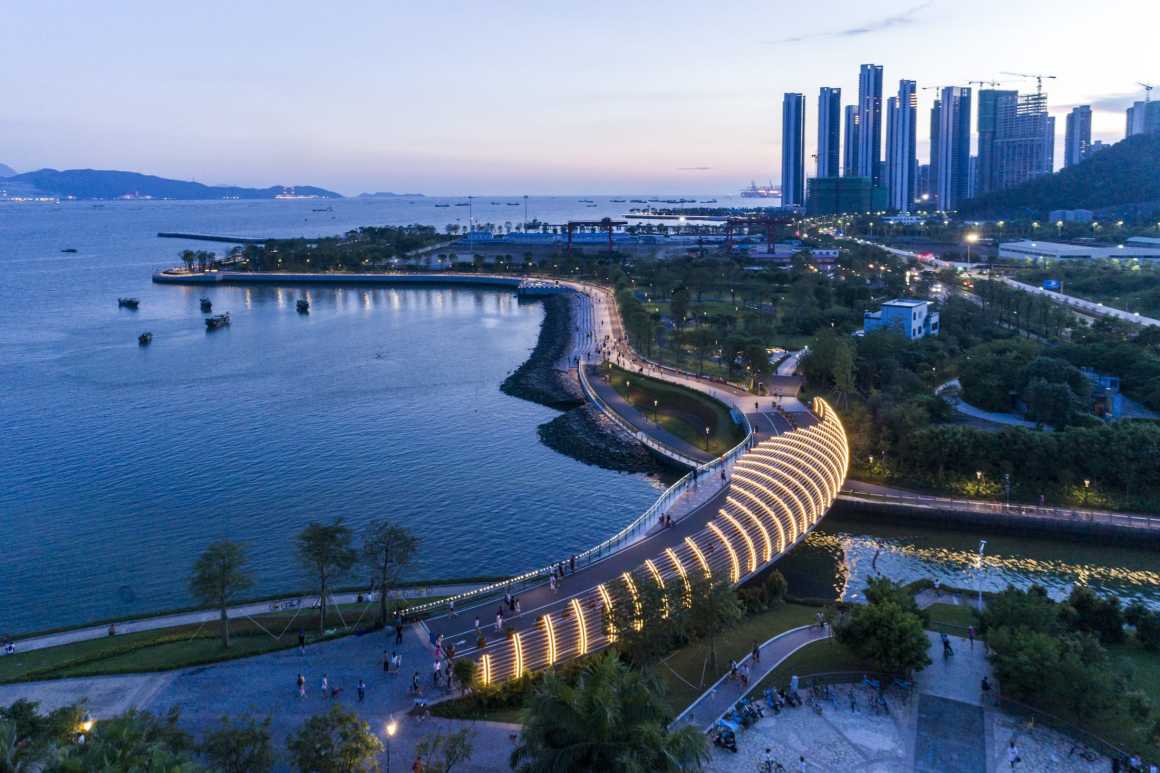
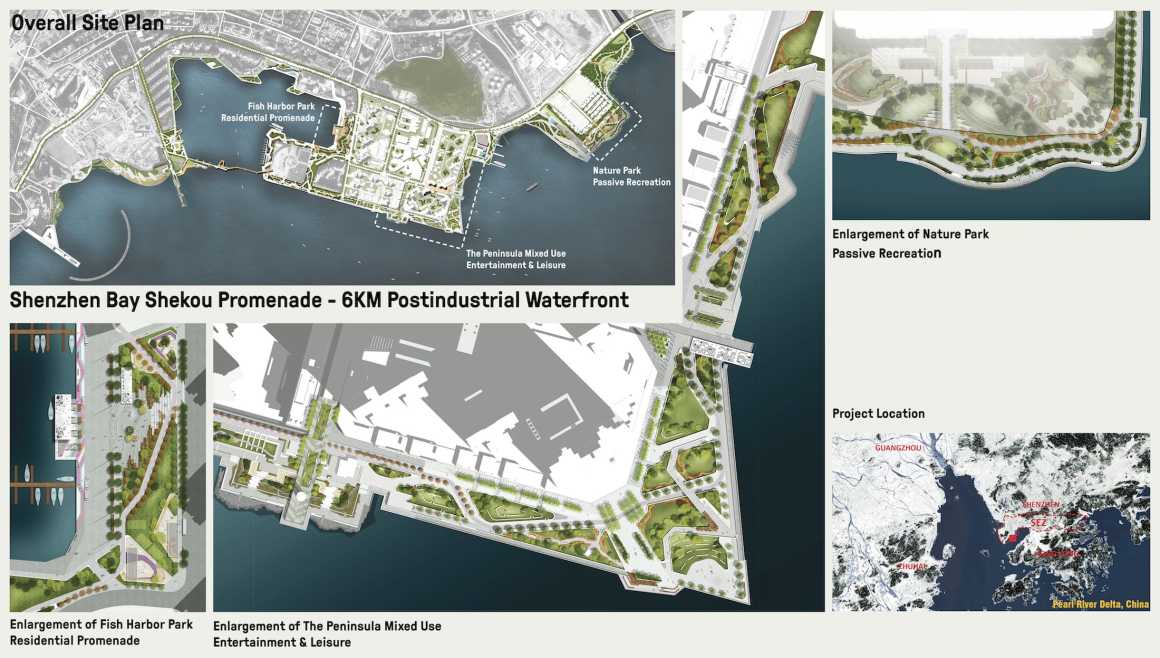
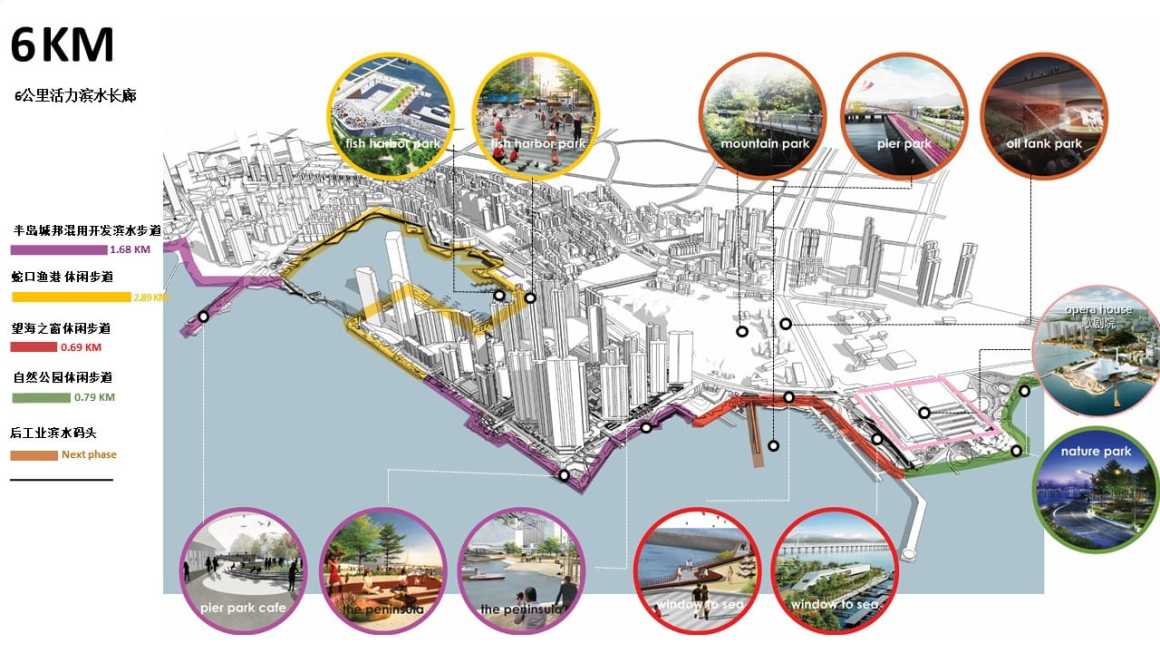


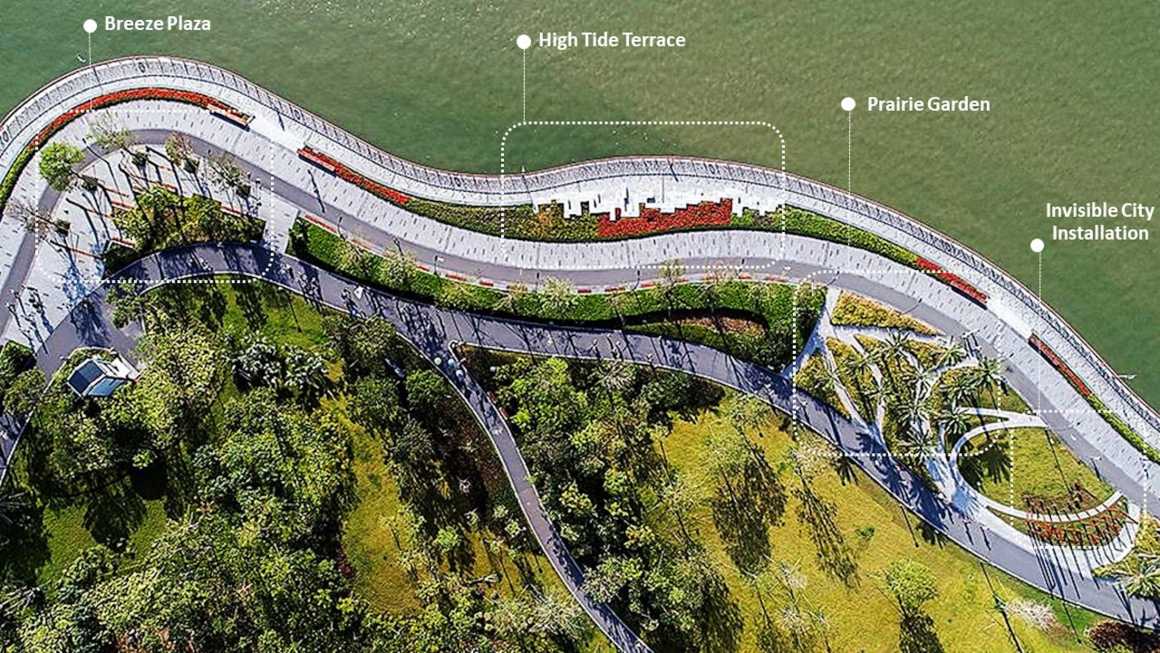
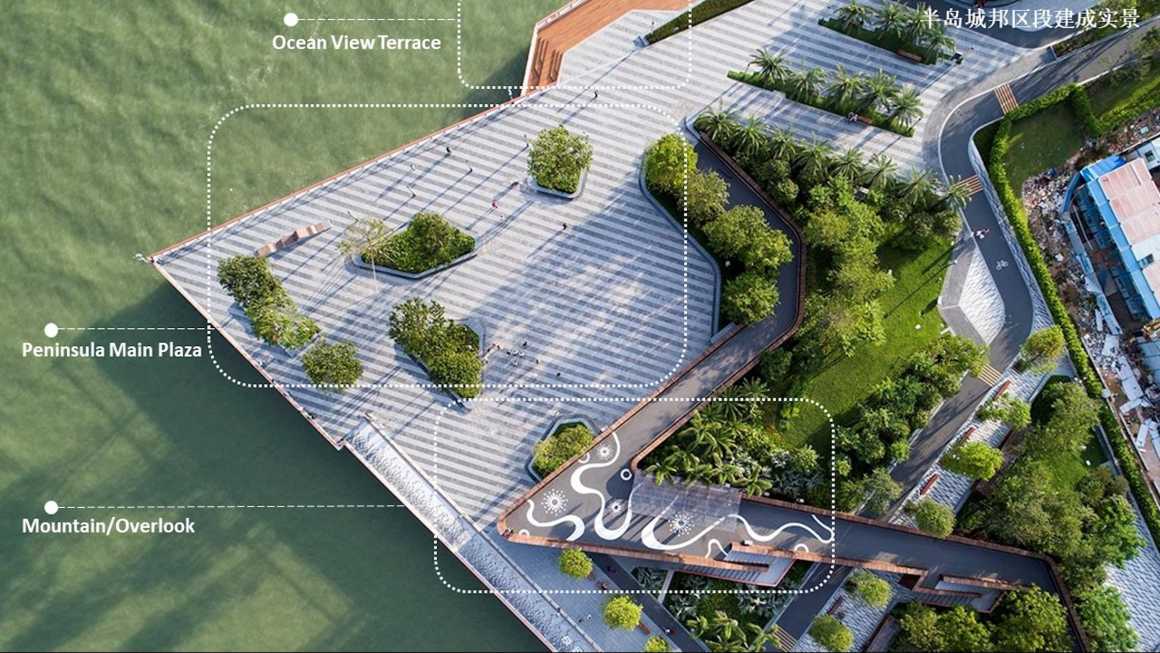

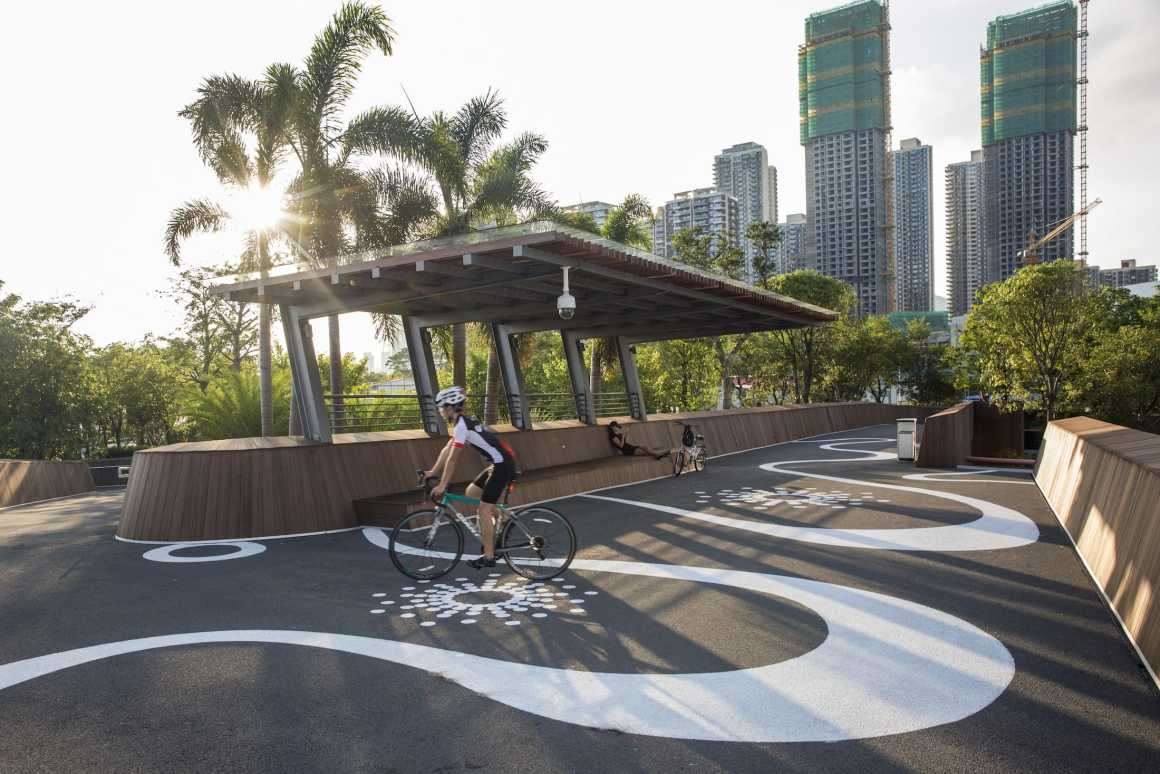
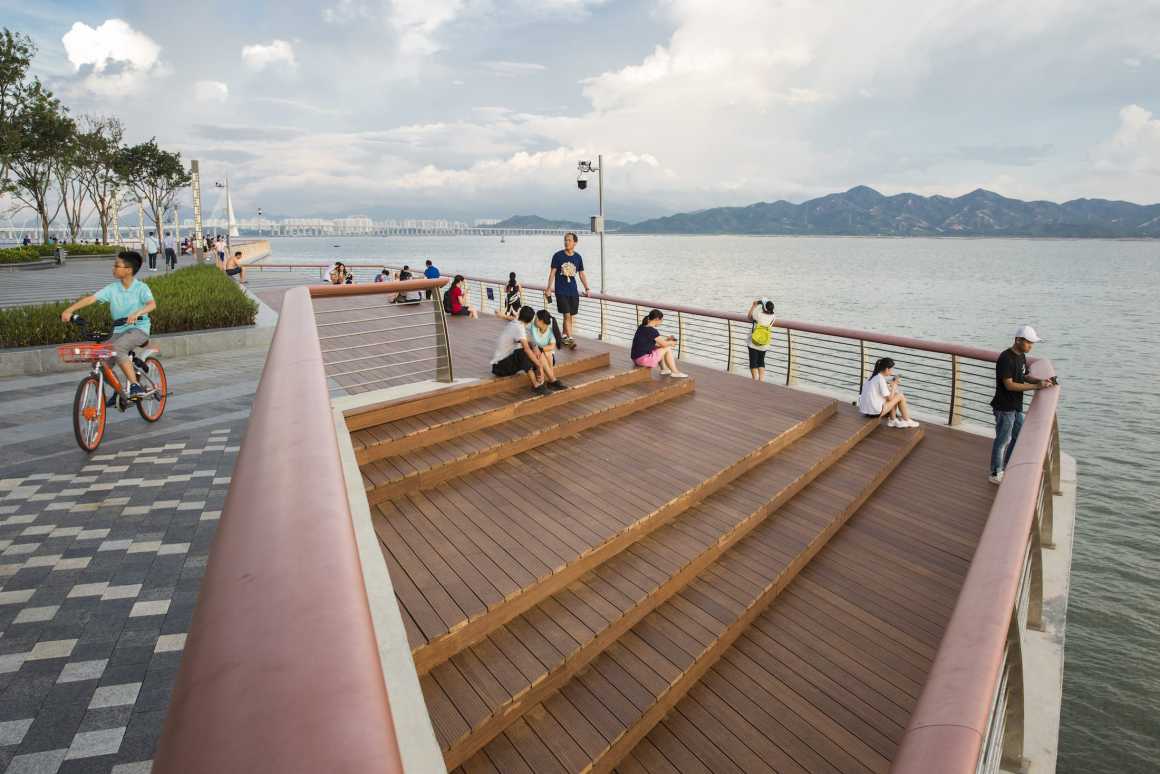
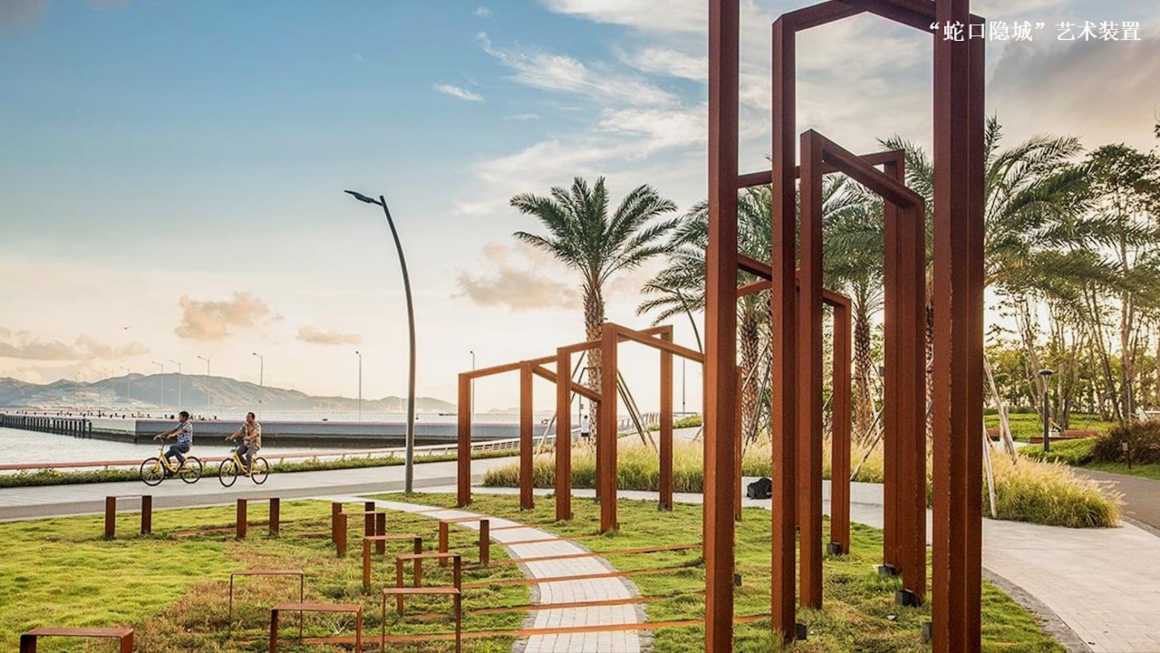
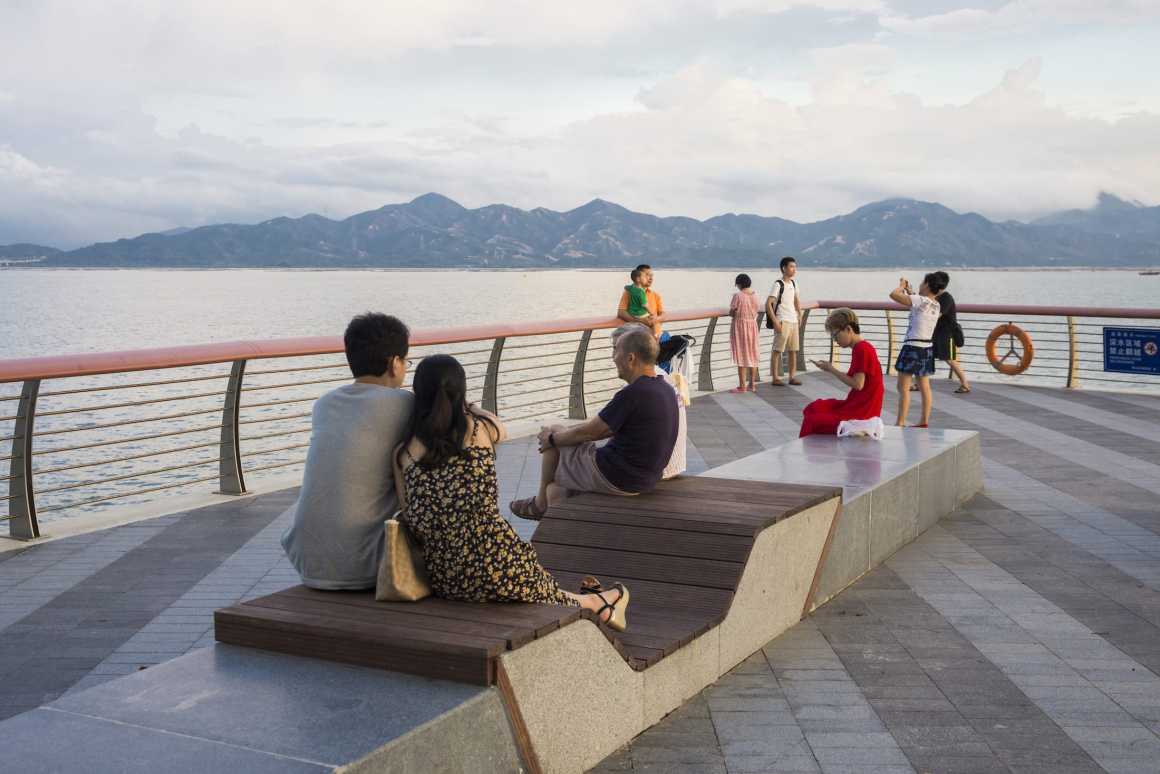
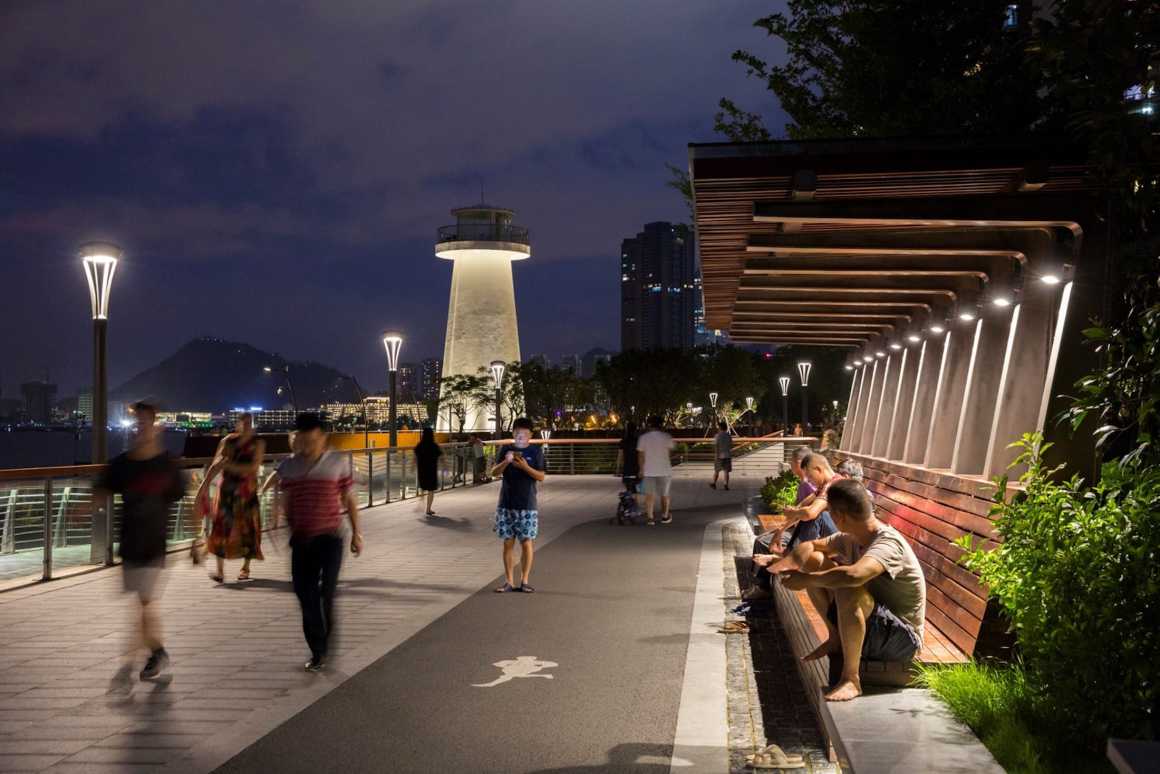
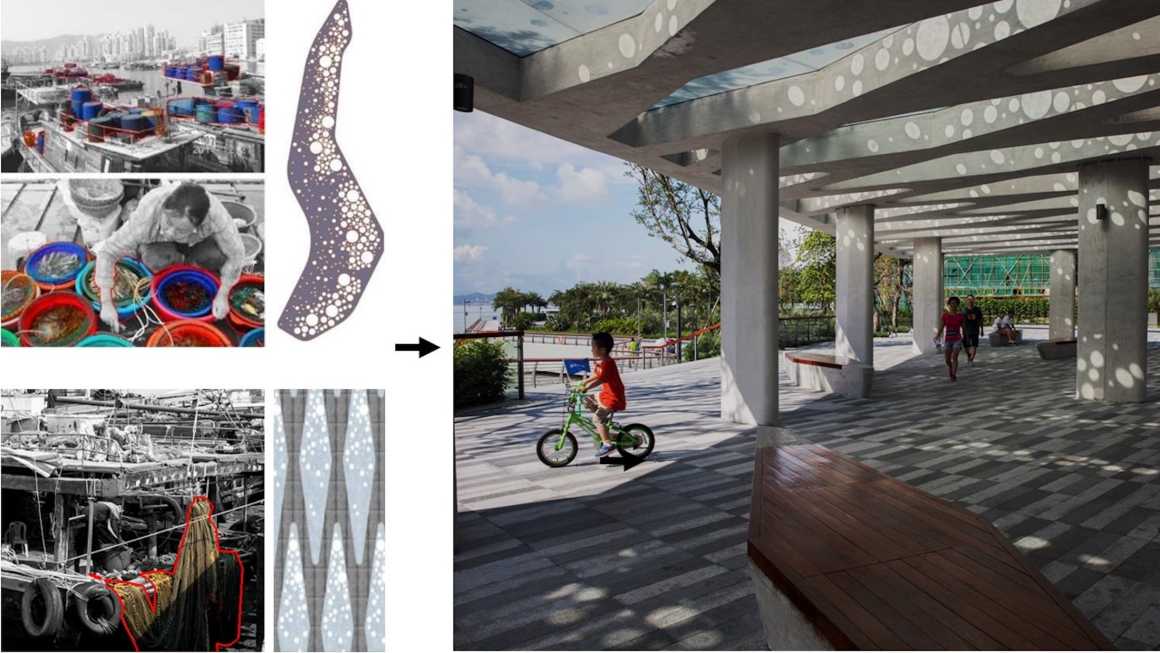

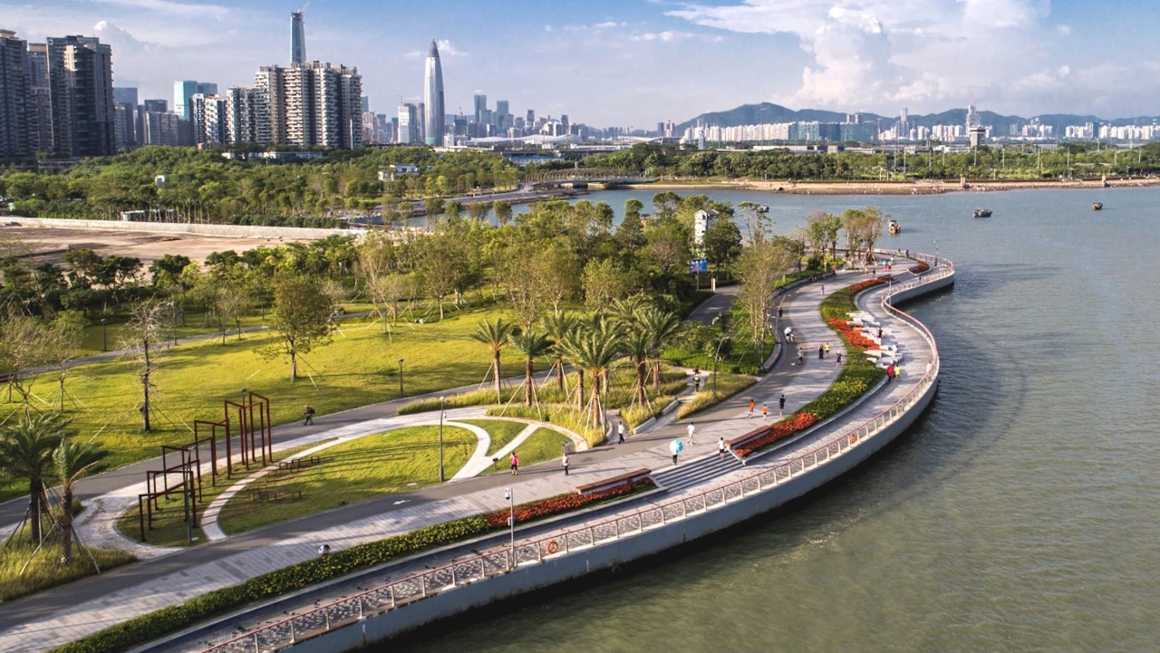





滨水公园